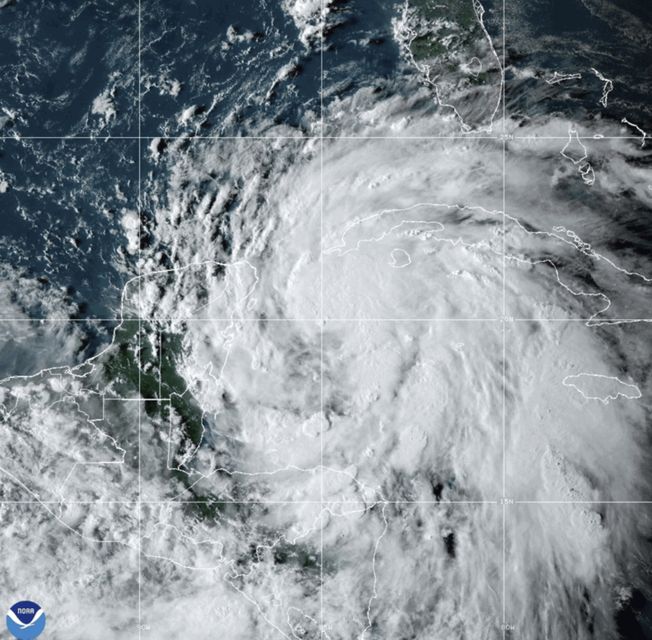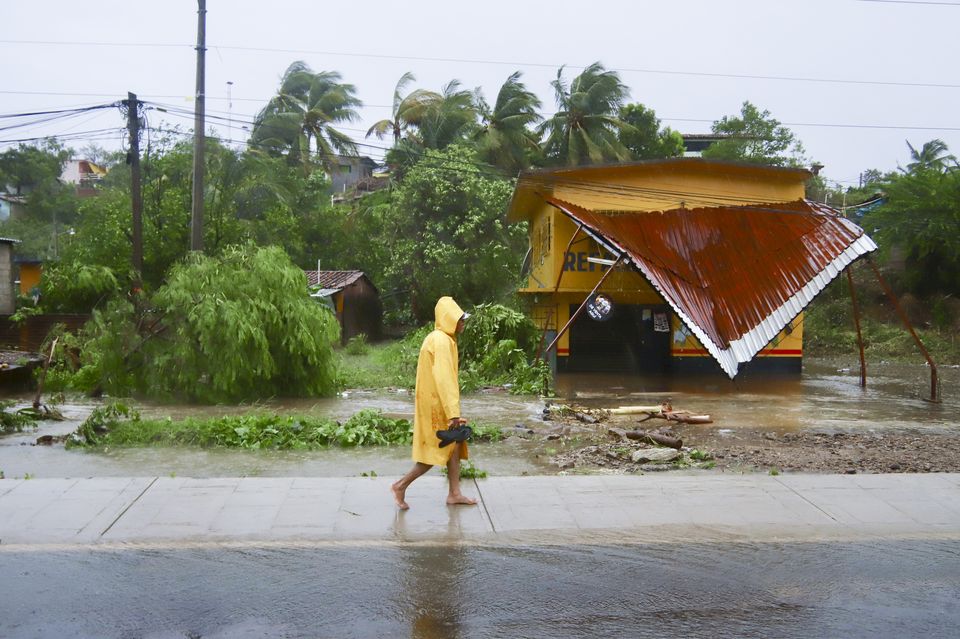Tropical Storm Helene was rapidly strengthening in the Caribbean Sea and expected to become a hurricane on Wednesday while moving north along Mexico’s coast toward the US.
It prompted residents to evacuate, schools to close and officials to declare emergencies in Florida and Georgia.
The storm is forecast to be “near hurricane strength” when it passes near Mexico’s Yucatan Peninsula early on Wednesday, the US National Hurricane Centre said, and to “intensify and grow in size” as it moves north across the Gulf of Mexico.
Heavy rainfall was forecast for the southeastern US starting on Wednesday, with a “life-threatening storm surge” along the entire west coast of Florida, according to the centre.
Helene is expected to become a major hurricane — a Category 3 or higher — on Thursday, the day it is set to reach Florida’s Gulf Coast, according to the hurricane centre.
The centre has issued hurricane warnings for part of Mexico’s Yucatan Peninsula and Florida’s northwestern coastline, where large storm surges of up to 15 feet (4.5 metres) were expected.
Mexico is still reeling from former Hurricane John battering its other coast. John hit the country’s southern Pacific coast late on Monday, killing two people, blowing tin roofs off houses, triggering mudslides and toppling scores of trees, officials said.
A satellite image shows Tropical Storm Helene off the Gulf Coast of Florida near Mexico and Cuba on Tuesday (National Oceanic and Atmospheric Administration via AP)
John grew into a Category 3 hurricane in a matter of hours on Monday and made landfall about 80 miles (128km) east of the resort of Acapulco, near the town of Punta Maldonado, with maximum sustained winds of 120mph (193kph) before weakening to a tropical storm after moving inland.
Helene, which formed on Tuesday in the Caribbean, is expected to move over deep, warm waters, fuelling its intensification. People in regions under hurricane warnings and watches should be prepared to lose power and should have enough food and water for at least three days, forecasters warned.
Early on Wednesday, Helene was located about 45 miles (75km) east-northeast of Cozumel, Mexico, and about 120 miles (190km) southwest of the western tip of Cuba as it moved northwest at 9mph (15kph).
Tropical storm warnings were in effect for the upper Florida Keys, the southern Florida Peninsula and the north-east coast of Florida early on Wednesday. A tropical storm watch was in effect for the South Carolina coast north of the Savannah River to the South Santee River.
Hurricane watches — which are a step down from warnings — were also in effect for parts of western Cuba and Florida, including the Tampa Bay area, the hurricane centre said.
“It’s going to be a very large system with impacts across all of Florida,” said Larry Kelly, a specialist at the hurricane centre.
Several counties on Florida’s west and northwestern coasts have issued evacuation orders. Multiple school districts, including in the areas around Tampa and the state capital Tallahassee, plan to close schools or reduce hours from Wednesday.
Some residents started filling sandbags ahead of anticipated flooding and began leaving areas on the coast.
US President Joe Biden declared an emergency in Florida and deployed Federal Emergency Management Agency teams to Florida and Alabama to support local first responders. Federal authorities were positioning generators, food and water, along with search-and-rescue and power restoration teams, the White House said.
A person walks in the rain after the passing of Hurricane John in Marquelia, Mexico (Luis Alberto Cruz/AP)
Florida Governor Ron DeSantis also issued an emergency for most of the state’s counties, while Georgia Governor Brian Kemp declared an emergency in his state as well.
The storm is anticipated to be unusually large and fast-moving, meaning storm surges, wind and rain will likely extend far from the storm’s centre, the hurricane centre said. States as far inland as Tennessee, Kentucky and Indiana could see rainfall.
Heavy rains and big waves lashed the Cayman Islands on Tuesday. Officials there closed schools, airports and government offices as strong winds knocked out power in some areas of Grand Cayman, while heavy rain and waves as high as 10 feet (three meters) unleashed flooding. Authorities urged people to stay indoors as the storm moved away later on Tuesday.
Helene is the eighth named storm of the Atlantic hurricane season, which began on June 1. Since 2000, eight major hurricanes have made landfall in Florida, according to Philip Klotzbach, a Colorado State University hurricane researcher.
The National Oceanic and Atmospheric Administration has predicted an above-average Atlantic hurricane season this year because of record-warm ocean temperatures. It forecast 17 to 25 named storms before the season ends November 30, with four to seven major hurricanes of Category 3 or higher.

